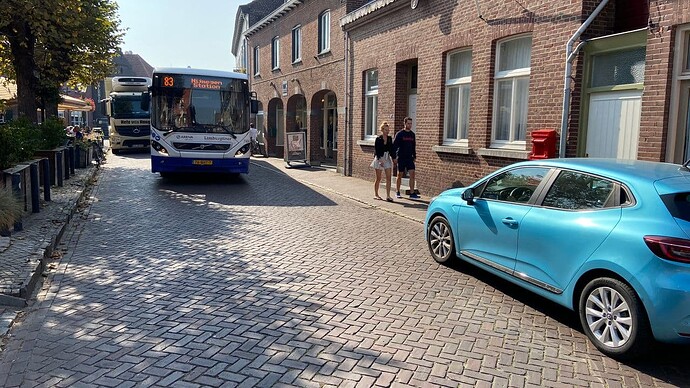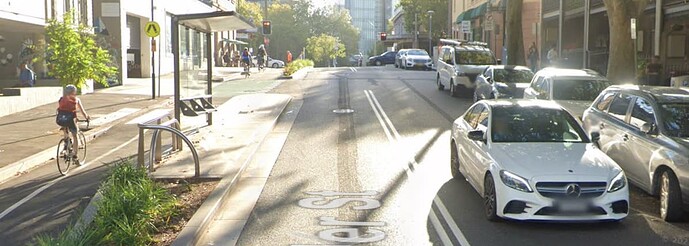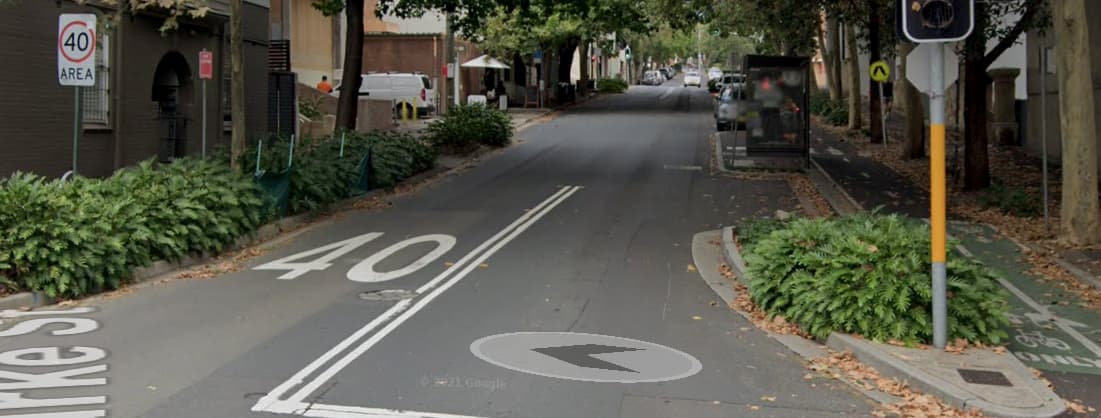Saw this article on the Conversation: I generally point at what is been done in Europe, but NZ’s problems with car-dependency is closer to the problems the US faces, so interesting to read an article from an American author.
This article about UTE’s explains it quite well from an nz point of view:
A very interesting topic and conversation.
Does anyone have further references please on:
- Australian sourced articles on this topic?
- NZ and overseas articles on minimising lane width - especially on high streets and urban roads with high density foot traffic and cyclists?
- Examples from anywhere where reduced lane widths was deployed to calm traffic?
This actually showed up on my twitter time line yesterday. The Project in AU doing a segment on it.
And the Sydney Morning Herald just published this article
And there must be tons of articles out there that reduced lanes leas to less speed. Coming from the Netherlands i know smaller streets lead to slower speeds
Thank you Jessica.
Useful to be alerted to these pieces.
And in terms of reducing lanes slowing down traffic. This is the first link google gave me;
Want to create safer streets? Change your road design. Multiple lanes are super dangerous in the middle of a city. Also, important to reduce parking etc. obviously and create bikelanes, transitlanes.
Great links and discussion thanks everyone.
For a long time now I’ve wondered if it would be possiblw for local governments to have designated “Small Car Only” parking spaces. Large, high utes and SUVs really block sightlines and make it difficult for other road users, especially at road intersections and driveways. Perhaps the parking spaces closest to road intersections, car park exits and entrances and similar spaces should only be available to vehicles under a certain height. Park there with a higher vehicle and face a fine.
Reducing lane widths:
Manual for Streets from the UK (attached) is one of the best sources of info. Plus:
- https://nacto.org/docs/usdg/lane_widths_on_safety_and_capacity_petritsch.pdf
- https://www.flower-mound.com/DocumentCenter/View/21356/Lane-Widths-and-Other-Cross-Section-Elements-on-Urban-Roads?bidId=
- Relationship of Lane Width to Safety on Urban and Suburban Arterials
- https://www.ciht.org.uk/media/9351/manual-for-streets-2.pdf
Planning Practice Feature Overcoming Resistanc.pdf (221.7 KB)
Thank your for these links on lane widths. All very helpful.
The Manual for Streets guides have been useful for this review: - thank you.
MfS1 and MfS2
Significant US study on this (6000 streets) - Longmont Colorado:
“The most significant relationship to injury accidents was found to be street width. As street widths widen, accidents per mile per year increases exponentially, and the safest residential street width are the narrowest.”
More myth busting about ‘wider is safer’ here (thanks for tips on some of these links):
See also:
Relationship of Lane Width to Safety on Urban and Suburban Arterials; 2007
Design Factors That Affect Driver Speed on Suburban Streets; Jan 2001
Narrower Lanes, Safer Streets; June 2015, Conference: Canadian Institute of Transportation Engineers
What I’ve learned:
-
Common Professional Perception is Flawed: ie. Wider lane widths are often thought to provide extra safety margins in a traditional street design paradigm
-
Wider lane theory is based on ‘highway’ practice - and passed through to urban settings
-
Travel lane width has a significant influence on traffic speeds, safety and roadway space allocation
-
Narrower lanes bring down operating speeds close to safer speed limits
-
By narrowing existing wide lanes - from “highway” standards to urban standards - more capacity can be obtained for pedestrians, bicycles and transit vehicles and users
-
In an urban commuting environment the need for a safety margin is smaller due to fewer trucks, lower speeds and higher interaction between the street users
-
When lane widths are reduced, space is unlocked for extended footpaths and planted buffers without significantly reducing vehicle capacity
-
Traffic delays on urban roads are principally determined by junctions, not by midblock free flow speeds:
- Reducing lane width in urban environments should therefore, not lead to congestion
- Perceptions of reduced capacity due to lane width reduction does not hold up to scientific scrutiny
- “Overall person” carrying capacity of the street improves
-
Narrower lane width are proven to be safer because:
- Promote eye contact between all street users
- Provide a message to large vehicle drivers to be careful in an urban environment
- Combined with other liveable streets elements in urban areas, result in:
- Less aggressive driving
- Slower speeds enabling vehicles to slow or stop over shorter distances to avoid a collision
Auckland Transport ‘Urban Street and Road Design Guide’:
‘When lane widths are reduced, space is unlocked for extended footpaths and planted buffers without significantly reducing vehicle capacity’
Overall Conclusion (based on above findings/articles)
Narrow lanes are preferred in urban environments:
-
Suited to urban conditions / needs
-
Safer
-
Provides more space for placemaking, more space for pedestrians and cyclist infrastructure
-
Improves the carrying capacity of the street
→ but despite this, professionals are typically prosecuting ‘wider is better/safer’
On this point I disagree. Lumping a diverse group of people into “professionals” isn’t helpful, and our NZ guidance is pointing towards 3.0 m (9.8’) to max 3.2 m (10.5’) traffic lanes in urban areas. The latter is the most often seen design dimension as it works better (especially on curvy streets) for buses. Every engineer I speak to “gets it” that 3.5 m lanes are too wide for urban streets. The exception for Dunedin is SH1 through the centre city (2x 3.5 m) - which definitely needs narrower lanes IMO.
Just showing how its been done in the Netherlands. If a bus doesnt fit, we wont make the road wider (as its more dangerous and causes more accidents), Cars just have to wait like the photo showing here.
The City of Sydney LGA has been introducing ‘in lane bus stops’ - aka ‘floating bus stops’ in recent years. Cars are forced to queue behind the bus. The road space is reallocated for other uses eg. planting, separated cycleway.
Campbell Street, Surry Hills:
Miller Street, Pyrmont:
Bourke Street, Darlinghurst:



